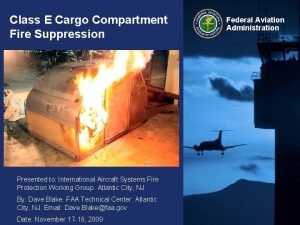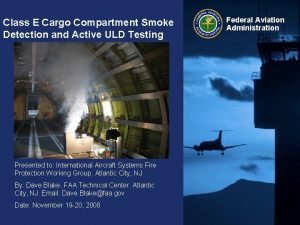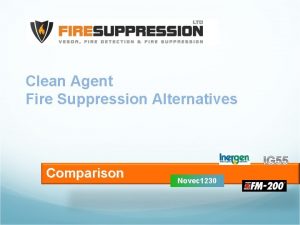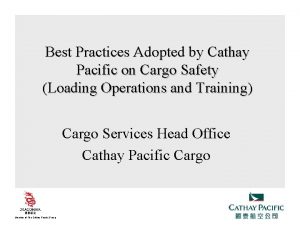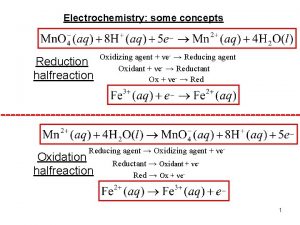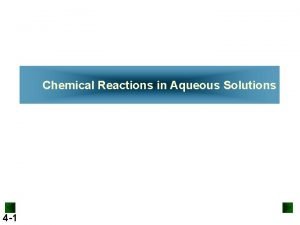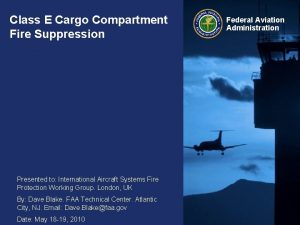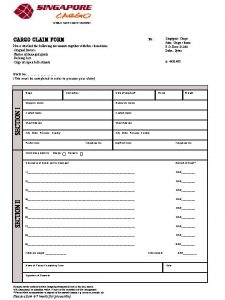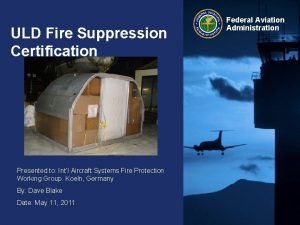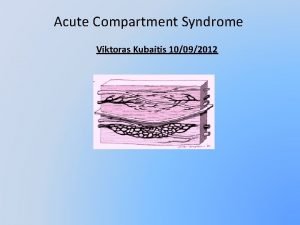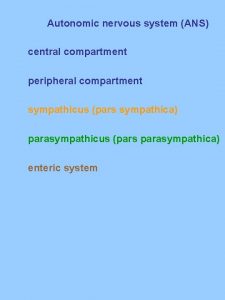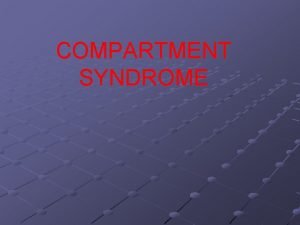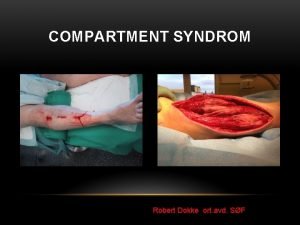ClassC Cargo Compartment ULD Suppression Agent Penetration The










- Slides: 10

Class-C Cargo Compartment ULD Suppression Agent Penetration The 8 th Triennial International Aircraft Fire and Presented to: Cabin Safety Research Conference By: Dhaval Dadia, FAA Technical Center Date: October 27, 2016 Federal Aviation Administration

Background v Tests have shown that flammable vapors from batteries in thermal runaway could accumulate in cargo containers. v Pressure pulse from igniting flammable vapors could dislodge the liners or open the decompression panels in a class-C compartment. v Halon fire suppression system would be rendered ineffective. Class-C Cargo Compartment ULD Suppression Agent Penetration October 27, 2016 Federal Aviation Administration 2

Objective • Measure the rate at which the fire suppression agent dissipates in the class-C cargo compartment. • Compare theoretical agent dissipation rates to measured agent dissipation rates Class-C Cargo Compartment ULD Suppression Agent Penetration October 27, 2016 Federal Aviation Administration 3

DC-10 Class-C Cargo Compartment ULD Suppression Agent Penetration October 27, 2016 Federal Aviation Administration 4

Class-C Compartment Setup v Compartment filled with 6 AKE ULDs. v. ULDs filled with cardboard boxes. ~15% free volume. Class-C Cargo Compartment ULD Suppression Agent Penetration October 27, 2016 Federal Aviation Administration 5

Class-C Compartment Test Setup v Testing was conducted to measure concentrations of FE-25 within a fully loaded class-C compartment. v Gas probes placed in the empty space within compartment. Probe 1 Probe 2 Probe 3 v. Compartment volume: 1303 ft 3. v Tests conducted to measure concentrations of FE-25 at various heights to observe stratification. Class-C Cargo Compartment ULD Suppression Agent Penetration October 27, 2016 Probe 4 Federal Aviation Administration 6

Class-C Compartment Test Setup 21 lbs of FE 25 discharged into the compartment. AKE ULD Class-C Cargo Compartment ULD Suppression Agent Penetration October 27, 2016 Federal Aviation Administration 7

Class-C Cargo Compartment ULD Suppression Agent Penetration October 27, 2016 Federal Aviation Administration 8

Results v Agent in the compartment dissipates much quicker than theoretical calculations. v Determine theoretical values by including v. Effects of ventilation. v. Leakage compensation v Correction factors could help determine agent dissipation rates in the compartment. v. Help determine agent concentration levels to inert compartment as well as containers. v Input and test data from others is welcome. Class-C Cargo Compartment ULD Suppression Agent Penetration October 27, 2016 Federal Aviation Administration 9

Questions? Dhaval Dadia dhaval. dadia@faa. gov (609) 485 -8828 Class-C Cargo Compartment ULD Suppression Agent Penetration October 27, 2016 Federal Aviation Administration 10
